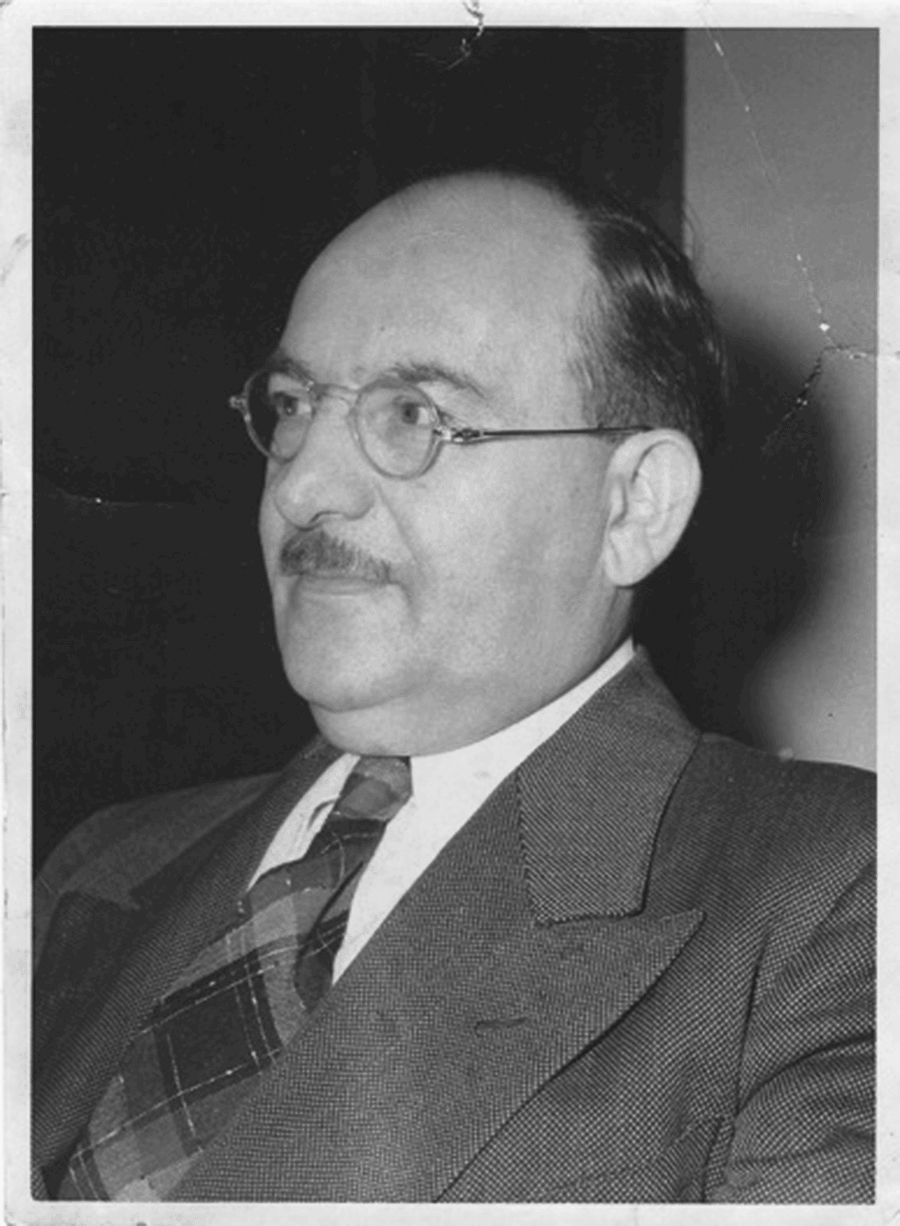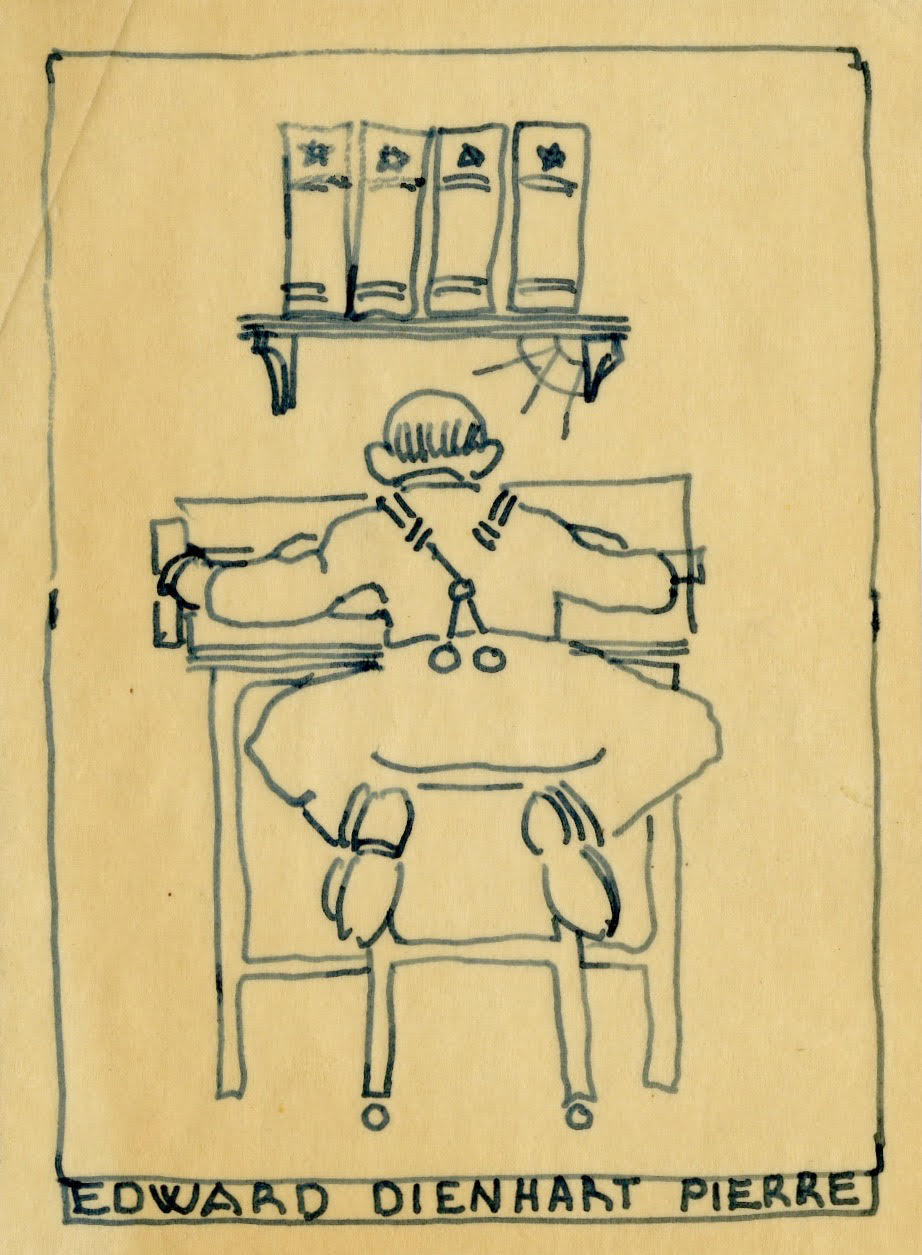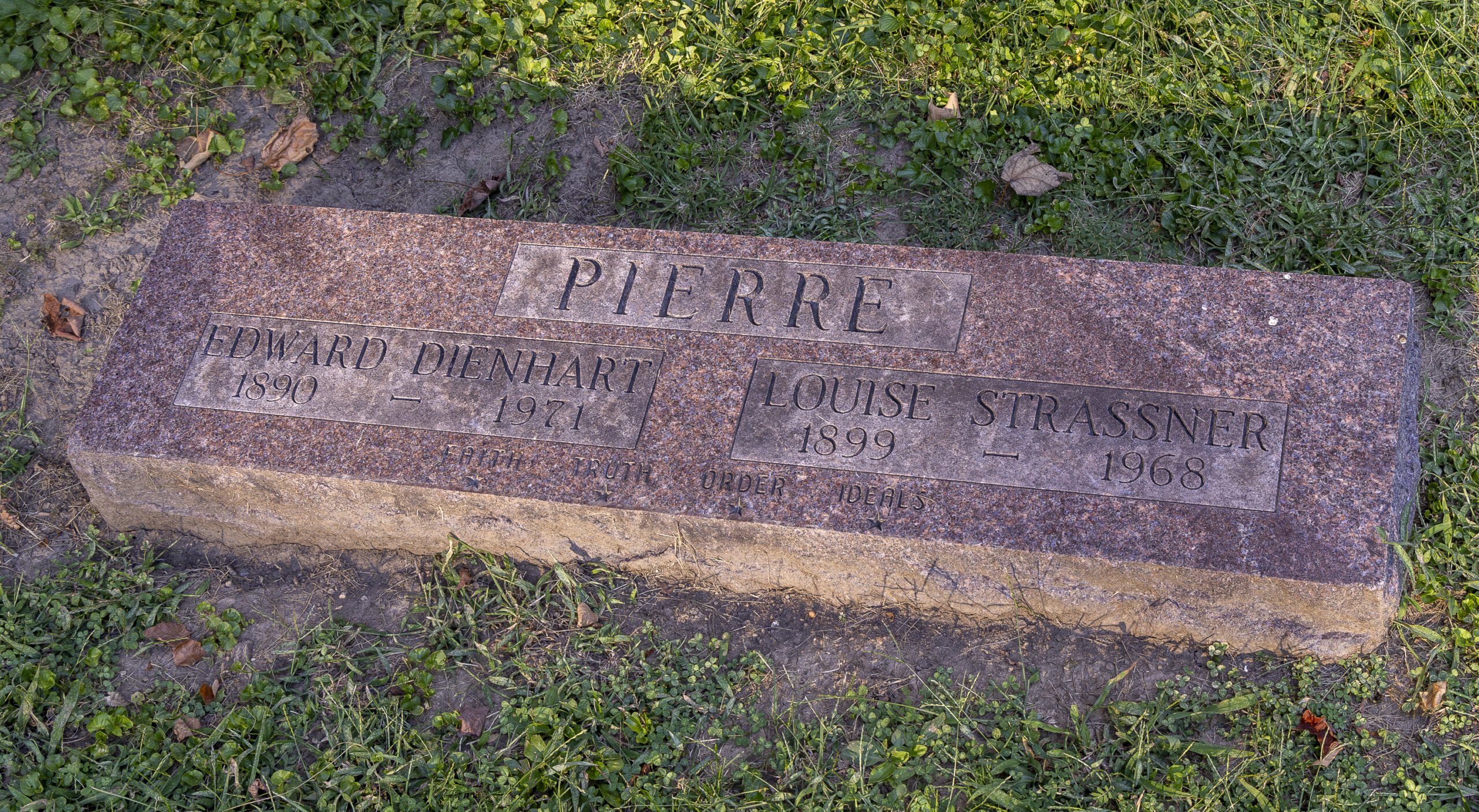Edward Dienhart Pierre (1890-1971)

In a letter to a friend written in 1948, Edward Pierre wrote, “When I was 13 years old, I told a school chum, ‘I WOULD RATHER BE A GOOD ARCHITECT THAN BE A MILLIONAIRE.’” He succeeded. An executive director of the Indiana Society of Architects once called him, “the greatest architect the state of Indiana ever produced and possibly the greatest visionary architectural professional Indiana has ever known.” True to his vision to the end, he had the words “Faith – Truth – Order – Ideals” engraved on his marker at Crown Hill, certainly qualities found in “a good architect.”
Born on May 22, 1890, in Fort Wayne, Pierre set out to become an architect while still very young. Seeing an ad for a correspondence course in drafting, he cajoled his parents into letting him sign up. As soon as he finished elementary school, he began working in the office of a Fort Wayne architect rather than going to high school. At the age of 21, he attended Valparaiso University and was later admitted to the Armour Institute of Technology in Chicago, graduating with honors. His first commission was to design a new home for his parents in Fort Wayne, the first of the many homes, large and small, that he designed over his lifetime.

From 1915-1917, he worked as a draftsman for a Detroit architect, further studying the trade before being drafted and serving with the 209th Army Engineers stationed at Fort Benjamin Harrison. In 1920, he moved to Indianapolis and set up his office and living quarters in a downtown hotel. Business was slow at first. His first two projects were for two Farmers State Banks in small Indiana towns. By 1923-1924, he was working with contractors and clients to design homes in the Meridian Kessler neighborhood of Indianapolis.
In 1925, Pierre and architect George Caleb Wright (1889-1973), who had supervised the construction of Chicago’s Merchandise Mart, partnered to form the firm Pierre & Wright. Wright excelled as an engineer while Pierre focused on design. They received contracts for Indianapolis Public School No. 78 in the 3700 block of East Vermont Street and the first five homes in the new Williams Creek development on the north side of town. Downtown, they built the Old Trails Building (1928) on Washington Street across from the Statehouse. It still stands, decorated with Terra-Cotta Native American busts at the doorway and similarly inspired details on the exterior.
In 1931, Pierre & Wright was awarded what was to be the firm’s most recognized work — the Indiana State Library. They incorporated Indiana materials — limestone for the exterior and sandstone for the interior — both quarried from southern Indiana. The result was so beautiful that Pierre later wrote, “I want to genuflect when I go in.” Other projects included Bush baseball stadium and many more homes and storefronts.
Pierre and Wright went their separate ways in 1944. Wright joined a partnership with architect Kurt Vonnegut, featured in our July 2024 newsletter. In addition to continuing to design buildings and homes large and small, Pierre spent most of his efforts advocating for city planning that focused on good overall design.

Pierre was Christmas shopping on Monument Circle one evening in 1937 when he noted that it “was filled with shoppers, the stores lit up, but the monument itself was in total darkness.” Seeing it was unchanged the following year, he made, he said, “a resolution that someday the monument should fulfill its function at Christmas time.” In 1939, he started a fundraising effort to place a life-sized nativity scene on the steps of the monument, something “reverent and inspiring, not crass or commercial.” World War II interrupted those plans, but when it was over, plans quickly began again. By Christmas 1945, decorations and choir presentations became part of Monument Circle during the holidays, thanks to his vision and guidance. In 1947, a hand-carved life-sized nativity scene arrived from Italy and was set up on the east side of the monument. The same figures, restored and repainted, are now placed outside Christ Church Cathedral. The decorations and choirs continued to expand through the years; the now familiar lights were added in 1962. Pierre was not originally in favor of the lights, fearing they would be too garish. However, he grew to love them and was chosen to turn them on as part of the November 29, 1968, opening ceremony. As he flipped the switch, he added, “May the light of peace that was shining through the first Christmas star shine again through these sparkling lights into our own hearts.”
A special thanks to Pierre’s granddaughter, Lisa Hendrickson, for her assistance and contributions. Her article Edward D. Pierre, Indiana’s “Greatest Architect” was published in the Indiana History Center’s Traces Magazine in Spring 2022, and is available for purchase. You can also watch her Indiana Landmarks lecture, “Edward Pierre and the Circle of Lights.”
For additional information, especially regarding locations of building and houses, see Connie Zeigler’s article in Indy Midtown Magazine.
Ball State University has a collection of Pierre and Wright blueprints and photos in their archives.

